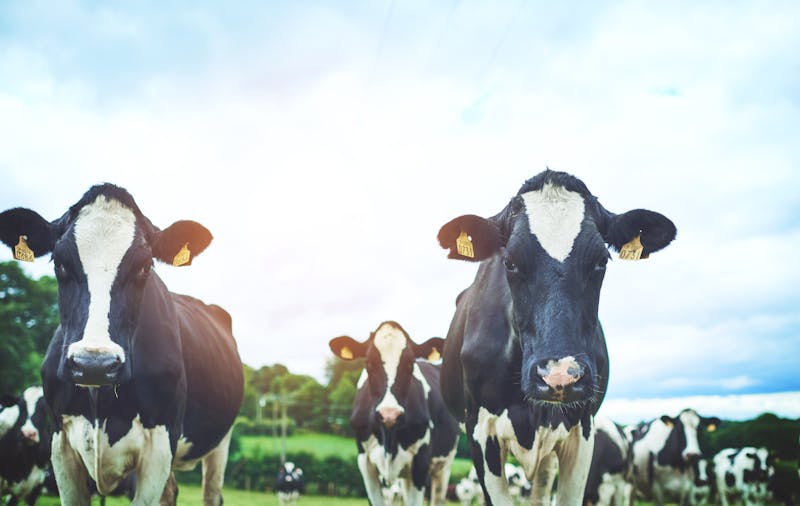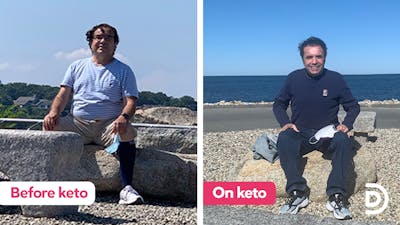The green keto meat eater, part 1
Part 1 of this series, below, examines the state of the current war on meat and how a conscious keto eater can find peace and a path forward.
Part 2 explores the link between cows and climate change and how a burgeoning worldwide movement in holistic regenerative agriculture is using cows to help draw carbon out of the atmosphere and store it in the soil.
Part 3 looks at the economics and practicalities for more wide-scale regenerative agriculture and how policies, emerging carbon markets, consumer choice, and other mechanisms can foster agricultural incentives to produce green animal products that are widely available, affordable and helping the planet reverse greenhouse gas emissions.
Part 1: Finding a path of peace in the meat-eating wars
If you eat meat and other animal products on your low-carb or ketogenic diet, are you helping to destroy the planet?
If you read the news these days, it is easy to feel shamed and blamed that you are. In early October, 2018, the UN Intergovernmental Panel on Climate Change (IPCC) warned we have just 12 years to limit the impact of climate change catastrophe, raising the stakes for action even higher. Agriculture and meat eating is a constant target.
“Avoiding meat and dairy the single biggest way to reduce your impact on the earth” blared The Guardian earlier this year, quoting a study out of Oxford University, published in Science in June 2018. Other headlines include “Meat is Horrible” or “Cows worse than cars“.
Influential writers like the UK’s George Monbiot persuade legions that the best way to save the planet from green house gas emissions is to drop meat and dairy. Films like Cowspiracy ramp up the rhetoric and guilt meat eaters into becoming vegetarians or vegans. In short, the message, everywhere these days, is that if you care about the planet, eating meat on a low-carb keto diet is evil and selfish.
For some anti-meat eaters, the main reason is animal cruelty, especially the inhumane treatment in industrialized factory farming and confined animal feeding operations (CAFOs.) But even happy, well-cared-for livestock raised in the most pastoral and gentle of settings must eventually die to serve our appetites. Each person has to square that reality with their own beliefs, which just like religious or spiritual belief, is not really open to debate, data and evidence. That is not what this series is about.
Cows and climate change
What we are exploring in this series, instead, is the controversy over livestock’s role in climate change and environmental damage.
All agriculture contributes greenhouse gas (GHGs) emissions to the atmosphere, but raising livestock contributes the most, chiefly carbon dioxide (C02), methane (CH4) and nitrous oxide (N2O). These emissions come predominantly from fermentation in the ruminant’s stomach (cow farts and belches of methane), manure handling, and fossil fuel burning in raising, processing, and transporting livestock and their products.
The generally agreed upon figure is that livestock contributes 14.5% of all GHGs — significant to the climate change picture, but not as high as the erroneous 51% that is widely cited and promoted in films like Cowspiracy. Of that 14.5%, it is estimated that cows — dairy and beef production —contribute 65% of all the livestock GHG emissions. Some GHG experts say that 14.5% figure is not accurate. University of California, Davis, researcher Dr. Frank Mitloehner, says in North America only 3.8% of all GHGs come from livestock.
Faustian dietary dilemma?
If you are like me, these competing facts, as well as the alarmist articles, studies, and films can induce waves of doubt and dilemma. We’ve thrived on delicious keto recipes, that often feature meat as a main dish.
We’ve seen our weight drop and our health greatly improve while consuming steaks, chops, roasts, whipping cream, cheeses and loads of butter.
Is it some cruel Faustian bargain we must strike where we dramatically improve our own health and wellness but in doing so contribute to environmental destruction and climate catastrophe?
Some of you will not have given this dilemma much thought. You aren’t currently worried too much about climate change or feeling a need to moderate your behavior to reduce your own carbon footprint. This guide may still help you understand some positive changes underway with agricultural systems, which stand to improve the quality of the food you eat while keeping it affordable.
This three-part guide, however, is especially written for those who feel climate change is the #1 issue of our time, who are troubled about the potential impacts of our choices and want to feel we are doing the right thing for the larger world while still experiencing optimal health. We want to reverse our diabetes, lose pounds, eliminate our IBS, and experience other LCHF benefits without worrying that we are contributing to overheating the planet for our children and our grandchildren.
In short, we want our meat, our health, and our thriving environment, too.
Is that an impossible quest?
Over the last four months I have researched this question deeply, talked to experts around the world, read umpteen studies, blogs and articles, studied the Paris Climate Accord, read conference reports, watched videos and more.
The constant talk about livestock, climate change and environmental degradation can get downright depressing. Since we all must eat, a natural defense mechanism is to simply tune out or dismiss any discussion around it. There were many times in my research that I longed for my previous blissful ignorance, when I could easily walk into a super market and pick up a cheap steak without a second thought.
Complex, challenging, controversial, confronting
Discussion and debate in this area is fraught. It is one of the most complex, challenging, and controversial topics. Emotions run high. Fights break out between pro-meat-eating and anti-meat-eating camps. Comments sections are filled with accusatory posts on both sides that get reduced to name calling and worse. Clashes occur even among people who are on ostensibly the same side of the debate, wanting to create healthy, wholesome, nutritious food that is good for the planet and good for our health.
To be honest, of the more than 30 articles and guides I have written for Diet Doctor in the past year, this series of articles on keto meat eating and the environment has caused me the most self-reflection and ultimately changed me the most.
I now eat meat with a clear conscience, but I have also changed my buying habits as a consumer and altered the type, quantity, and quality of the meat that my family and I eat.
But here’s the good news: a keto meat-eating diet can actually enhance the environment — if you make some specific choices as a consumer and a citizen. The right choices can even help improve the nutrient quality and sustainability of our food systems, and reduce the current inhumane animal-rearing methods of factory farming, all while taking excess carbon dioxide out of the atmosphere and fixing it in the soil.
Sound like some delusional fantasy? It is not.




